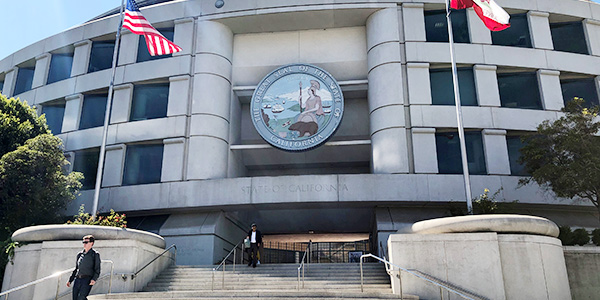The California Public Utilities Commission opened a proceeding Thursday to help prevent energy emergencies next summer like those that occurred in August and September.
The rulemaking is intended to identify and institute near-term measures that could limit energy consumption and boost generation during heat waves that strain the Western grid. California’s rolling blackouts in mid-August were the first since the energy crisis of 2000/01. (See CAISO Blames Blackouts on Inadequate Resources, CPUC.)
“Through this proceeding we will identify measures that can be implemented as soon as possible to address reliability for next summer,” Commissioner Liane Randolph said. The CPUC, CAISO and the California Energy Commission (CEC) are working together to ensure reliability going forward, she continued.
Load-serving entities under the CPUC’s jurisdiction are procuring 2,400 MW of new capacity to come online by summer. But the CPUC said additional measures, including enhanced demand response programs, are needed to ensure the state has enough energy to meet demand and maintain reserves intended to prevent a larger grid failure.
The rulemaking will consider compensating customers for switching to back-up generators during times of strained supply. It will try to reach more residents through advertising and social media to urge them to conserve energy during heat waves. And it will seek increased capacity from the state’s investor-owned utilities by retrofitting generators and increasing efficiency for greater output.
The measures must be approved by April 2021 so they can be implemented by the summer, the CPUC said.
A preliminary root-cause analysis of the August blackouts by the CPUC, CAISO and the CEC recommended that the CPUC update its resource and reliability planning targets to account for extreme heat waves and expedite the development of resources that can come online by summer. (See CAISO Says Constrained Tx Contributed to Blackouts.)
The retirement of fossil-fuel plants and switch to renewable energy left the state short of capacity as solar power waned in the evenings during the summer heat waves. More storage for renewable resources is needed to compensate for shortfalls, CAISO and the CPUC said.
“With respect to updating resource and reliability planning targets to increase supply and account for the state’s transitioning energy mix, this [order instituting rulemaking] will evaluate whether it is possible to increase the month-ahead RA procurement requirement, outside of the current multi-year process, using information provided in the prospective summer assessment report,” the commission’s decision said.
After the blackouts of Aug. 14-15, CAISO reported that large amounts of electricity had been exported on those days. The root-cause report acknowledged the error.
“Under-scheduling of load [by LSEs’ scheduling coordinators] and convergence bidding clearing net supply signaled that more exports were supportable.”
Some critics, including former CPUC president Loretta Lynch, questioned why the ISO had allowed the exports to occur. (See Former CPUC President Calls for CAISO Probe.)
The CPUC said it will address the issue in its rulemaking.
“For purposes of determining when capacity can be exported from the CAISO-controlled grid, particularly during reliability events, a resource that provides RA capacity can be tagged such that it would not be exported during these critical times,” it said.




